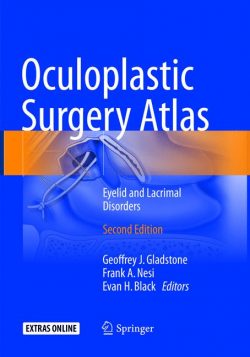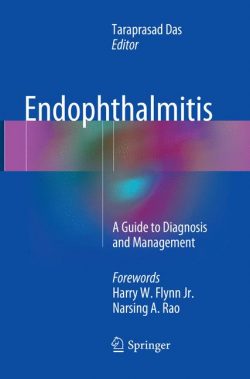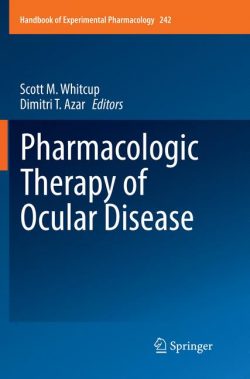This handbook on orbital, lacrimal and eyelid emergencies deals with such situations in a practical manner guiding the ophthalmologists in accurate handling and making them more proficient and confident in managing vision and life-threatening emergencies. With 51 chapters and more than 350 images, this book covers all the eye emergencies that generalist and specialist ophthalmologists can expect to come across in their day to day practices.
It can be argued that the orbit can no more be called ‘Pandora’s Box’ because of the unpredictable nature of its contents. This perception has changed over the years due to the advent of improved diagnostic, in particular, imaging techniques. However, since medical residency provides very little exposure to orbital and adnexal disorders, most clinicians are inexperienced and unsure about their management. Facing an emergency situation where improper management can rapidly worsen the condition leading to blindness or even death of the patient is every ophthalmologist’s nightmare. The emergent nature of these conditions does not always provide for a leeway to refer these patients to an orbit and oculoplasty specialist, who are few and far between. By the time the patient reaches his destination, his vision maybe irrevocably lost. The legal implications of such mismanagement can be significant too.
This book is a quick and essential resource to manage and refer eye emergencies with confidence.
Here is a practical guide to managing eye emergencies in clinical practice. It covers all vision and sometimes life-threatening orbital and oculoplastic emergencies.
“A new handbook that covers a very broad spectrum of pathologies, from subluxated globes and adnexal injuries due to animal bites to more commonly encountered problems like dacryocystitis and orbital fractures. … This is an excellent reference text for general ophthalmologists and a good place to start reading for orbital and oculoplastic surgery fellows.” (EuroTimes, May, 2017)
Dr. Bipasha Mukherjee is currently director of the Department of Orbit, Oculoplasty, Reconstructive and Aesthetic Surgery at Medical Research Foundation, Sankara Nethralaya, in Chennai, India. Her areas of interest include diseases of the orbit and adnexa including tumors, lacrimal and cosmetic eyelid surgery, cosmetic rehabilitation and reconstruction of anophthalmic socket, traumatic eyelid and adnexal injuries. She takes active interest in training of postgraduate residents and fellows at her institute. She has published more than 35 papers in peer-reviewed journals, and has made presentations at more than 100 national and international conferences.
Dr. Hunter Yuen Kwok Lai (FRCOphth, FRCSEd) graduated from The Chinese University of Hong Kong. He is the consultant ophthalmologist and Coordinator of the Orbital & Oculoplastic Surgery at Hong Kong Eye Hospital. He has more than 60 peer reviewed international publications and has delivered numerous oral and posters presentations in numerous international meetings. Dr Yuen is the First Vice President of Asian Pacific Society of Ophthalmic Plastic and Reconstructive Surgery (APSORPS) from 2012 to 2016 ; President of Hong Kong Society of Ophthalmic Plastic and Reconstructive Surgery (HKSOPRS) in year 2016. He was awarded as One of Ten Outstanding Youth Persons Hong Kong in 2007, Hong Kong Volunteer Award in year 2011, Asian Pacific Academy of Ophthalmology Achievement Award and Distinguished Service Award in 2012.
This handbook on orbital, lacrimal and eyelid emergencies deals with such situations in a practical manner guiding the ophthalmologists in accurate handling and making them more proficient and confident in managing vision and life-threatening emergencies. With 51 chapters and more than 150 images, this book covers all the eye emergencies that generalist and specialist ophthalmologists can expect to come across in their day to day practices.
It can be argued that the orbit can no more be called ‘Pandora’s Box’ because of the unpredictable nature of its contents. This perception has changed over the years due to the advent of improved diagnostic, in particular, imaging techniques. However, since medical residency provides very little exposure to orbital and adnexal disorders, most clinicians are inexperienced and unsure about their management. Facing an emergency situation where improper management can rapidly worsen the condition leading to blindness or even death of the patient is every ophthalmologist’s nightmare. The emergent nature of these conditions does not always provide for a leeway to refer these patients to an orbit and oculoplasty specialist, who are few and far between. By the time the patient reaches his destination, his vision maybe irrevocably lost. The legal implications of such mismanagement can be significant too.
This book is a quick and essential resource to manage and refer eye emergencies with confidence.
A practical guide to managing eye emergencies in clinical practice
Covers all vision, and sometimes life-threatening orbital and oculoplastic emergencies
Written by leading experts in oculoplastic surgery from around the world





